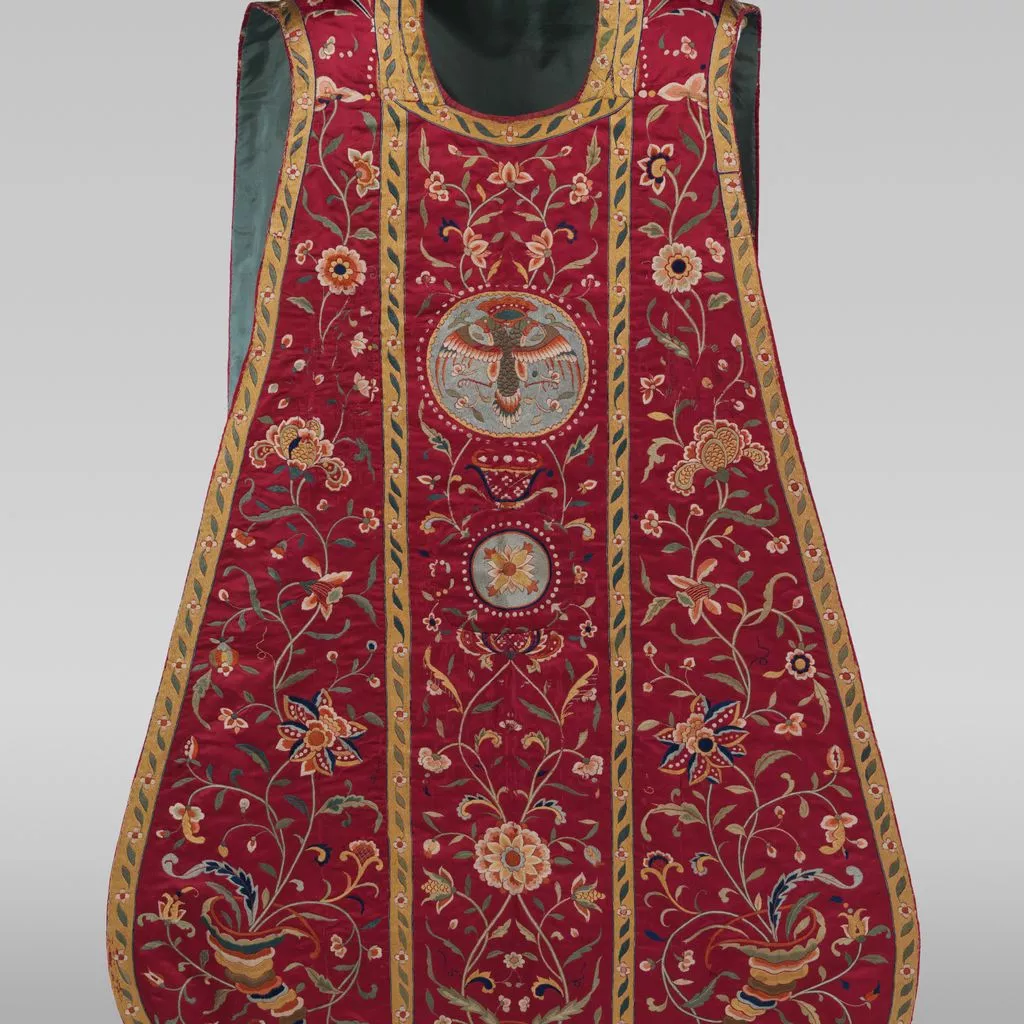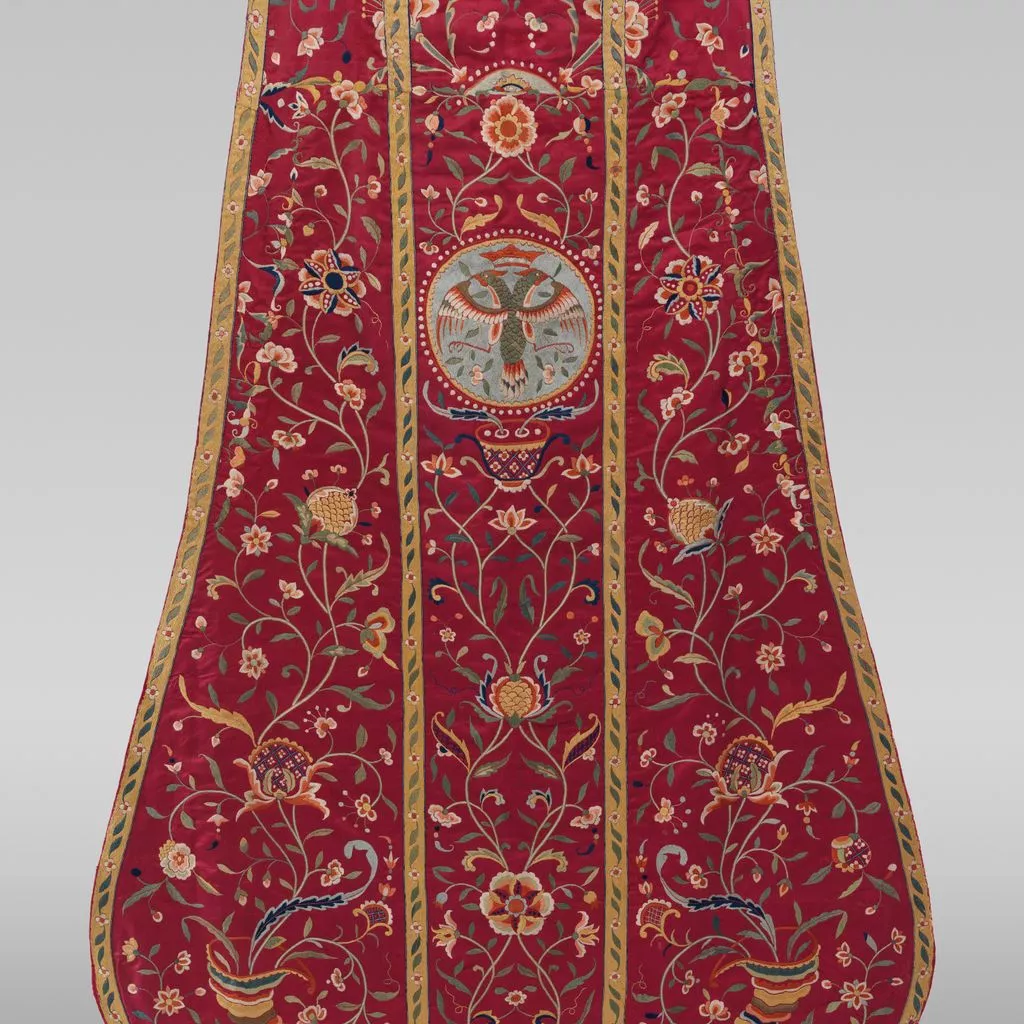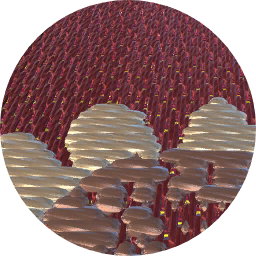Description
This deep red satin chasuble was embroidered in China. Its slender, A-line shape was common in chasubles of eighteenth-century Spain, where it may have been used.¹ The focal point of the embroidered design is the roundel with a double-headed eagle at the center of the vestment’s front and back. Although the double-headed eagle surmounted by a crown was a symbol of the Habsburg monarchy, here it is purely decorative and tinged with an auspicious Chinese flavor.² Instead of grasping arrows in their talons, as they would in the Habsburg motif, the birds dangle flowering and leafy stems from their beaks. In Chinese textiles auspicious birds frequently hold symbolic flora: a rank badge in the Metropolitan Museum’s collection features a crane that grips a branch bearing both a peach and a peach blossom.³ The front and back of the chasuble are each divided into three vertical sections, separated by narrow embroidered floral trim that also borders the neck and edges.⁴ The central section consists of a series of vertically aligned roundels, floral rosettes, and geometrically decorated vessels resting on stands amid a simple ogival pattern of flowering vines. On each of the two side sections, a graceful design of delicately curving leafy stems emerges from a multicolored cornucopia, a long-standing European motif. Cornucopias are included in at least two other eighteenth-century chasubles embroidered in China, one now in the Metropolitan and the other in the Museo Nacional del Virreinato, Tepotzotlan, Mexico, and formerly in the Catedral de Mexico—a reminder that there were markets besides Europe for chasubles embroidered in China.⁵ The scrolling pattern of the side panels is punctuated with large flowers, some of which include elements from Chinese decorative arts and others that are unusual from a Chinese perspective—even quite fantastic. The large flowers close to the cornucopias on the front of the garment and flanking the eagle roundel on the back are rather unrefined in technique, featuring dots on their radiating petals and a bold red, white, yellow, and blue coloration that lacks the more subtle shades of light red seen in the smaller flowers nearby, a customary coloration in Chinese embroidery. As dotted petals are fairly common in Indian floral textiles of the eighteenth century but unusual in Chinese examples, these bold flowers and other similarly distinctive blooms may reflect the Chinese embroiderer’s attempt to mimic the Indian floral patterns that were so popular in international trade. [Melinda Watt, adapted from Interwoven Globe, The Worldwide Textile Trade, 1500-1800/ edited by Amelia Peck; New York: Metropolitan Museum of Art; New Haven: distributed by Yale University Press, 2013] 1. Johnstone, High Fashion in the Church, p. 109.2. Some examples of purely decorative double-headed eagles are found in Portuguese collections. See, for example, the detail of an eighteenth-century colcha in Pacheco Ferreira, As alfaias bordadas sinoportuguesas, p. 158, fig. 108.3. Metropolitan Museum, acc. no. 36.65.10. Doubly auspicious, the crane represents the highest rank for a civil official, and both crane and peach are associated with longevity.4. Another chasuble, embroidered in China and now in the Metropolitan Museum’s collection (acc. no. 61.227), also has a tripartite division and a similar embroidered trim.5. For the Metropolitan’s example, see note 4 above; for the chasuble in Mexico, see Mayer et al., Raiment for the Lord’s Service, pp. 274–75, no. 140.






